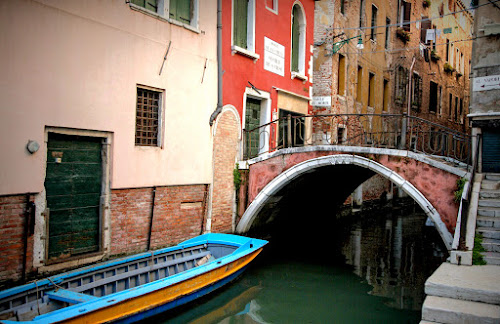In any other city the area around the Ponte dei Morti o della Chiesa will probably be declared unsafe to live in, and the buildings summarily demolished and fancy new apartment buildings erected. But what I've learnt about many of the buildings in Venice is that the almost omni-present decay one sees on the outside often hides smart, modern and too-expensive apartments on the inside. Don't be fooled by a building that looks like it hasn't been repaired since Napoleon's time and houses nothing else but squatters and rats. It may just be housing the upmarket boutique hotel you book yourself into on your next visit.
Not that the Ponte dei Morti o della Chiesa is in bad shape at all. It's one of those smart stone bridges with a broad stairway and a simple iron railing that were in vogue in the nineteenth century and have been fairly well looked after since. Bridges, I suspect, are built to last much longer than dwellings in Venice.
The name of the bridge literally means "the dead, or of the church". The church referred to is the San Cassiano church and the 'dead' are those who lay in its graveyard, which existed before the graveyards in Venice were moved to the island of San Michele. It started life as a stone bridge in 1488, replaced by a wooden one in 1502, and rebuilt once again in stone in 1615. And that's the one we're looking at now.


No comments:
Post a Comment